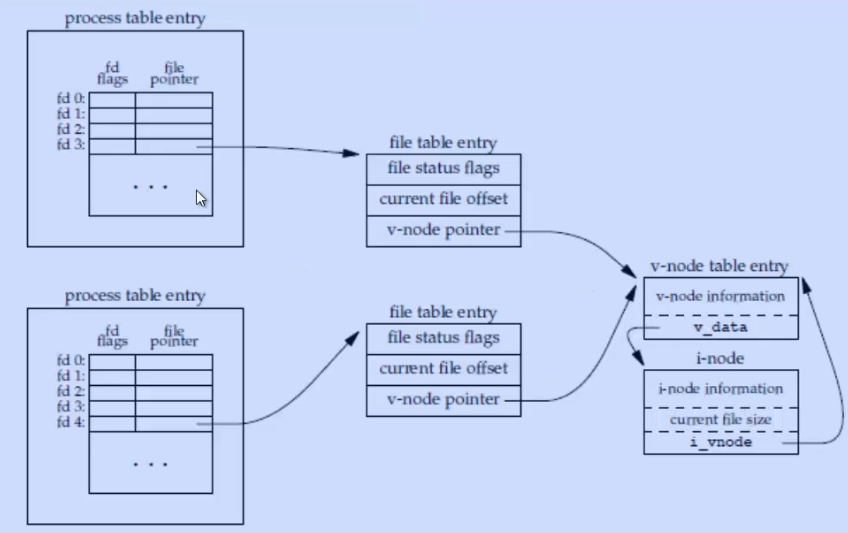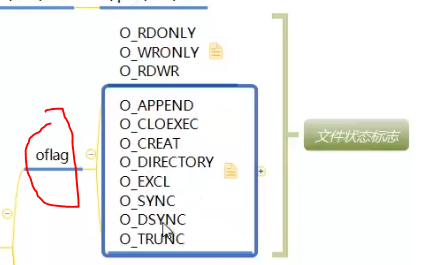文件I/O
#include <sys/types.h>
#include <sys/stat.h>
#include <fcntl.h>
// 打开一个已经存在的文件
int open(const char *pathname, int flags);
参数:
- pathname:要打开的文件路径
- flags:对文件的操作权限设置还有其他的设置
O_RDONLY, O_WRONLY, O_RDWR 这三个设置是互斥的
返回值:返回一个新的文件描述符,如果调用失败,返回-1
errno:属于Linux系统函数库,库里面的一个全局变量,记录的是最近的错误号。
#include <stdio.h>
void perror(const char *s);作用:打印errno对应的错误描述
s参数:用户描述,比如hello,最终输出的内容是 hello:xxx(实际的错误描述)
// 创建一个新的文件
int open(const char *pathname, int flags, mode_t mode);
*/
#include <sys/types.h>
#include <sys/stat.h>
#include <fcntl.h>
#include <stdio.h>
#include <unistd.h>
int main() {
// 打开一个文件
int fd = open("a.txt", O_RDONLY);
if(fd == -1) {
perror("open");
}
// 读写操作
// 关闭
close(fd);
return 0;
}文件描述符

文件描述符是一个非负整数。,UNIX系统shell把文件描述符0与进程的标准输入关联,文件描述符1与标准输出关联,文件描述符2 与标准错误关联。
在进程的内核区 ,由内核进行管理 ->PCB(进程控制块)管理文件描述符 在进程控制块里面有一个数组->文件描述符表


每打开一个文件,则占用一个文件描述符,而且是空闲的最小的一个

O_CREAT和O_EXCL结合使用 二者为一个原子操作
O_SYNC和O_DSYNC
O


 浙公网安备 33010602011771号
浙公网安备 33010602011771号